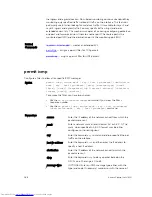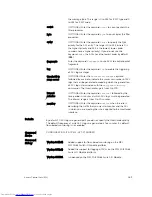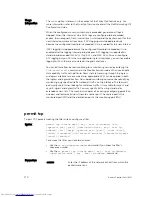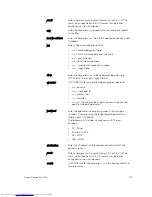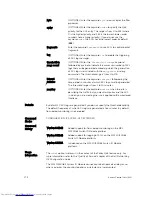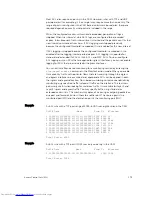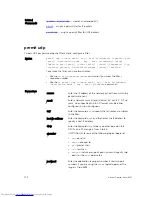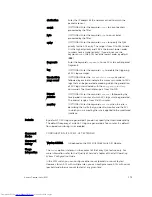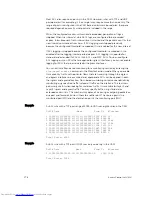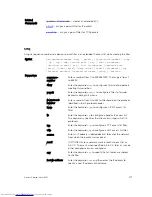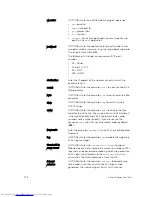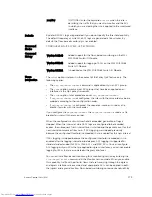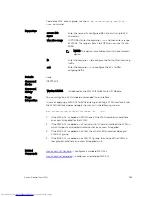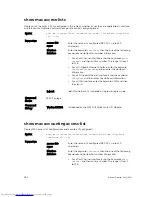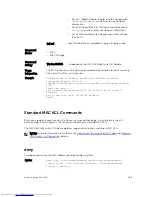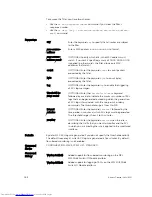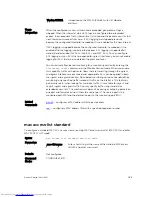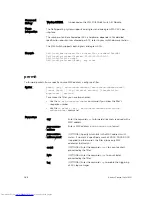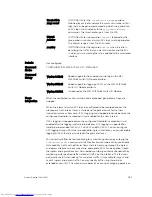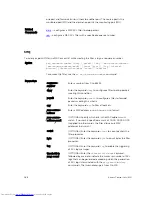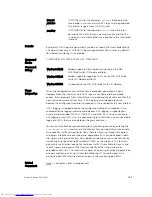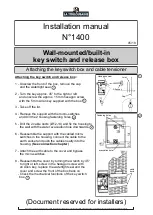
operator
(OPTIONAL) Enter one of the following logical operands:
•
eq
= equal to
•
neq
= not equal to
•
gt
= greater than
•
lt
= less than
•
range
= inclusive range of ports (you must specify two
ports for the
port
parameter.)
port port
(OPTIONAL) Enter the application layer port number. Enter
two port numbers if you are using the range logical operand.
The range is from 0 to 65535.
The following list includes some common TCP port
numbers:
• 23 = Telnet
• 20 and 21 = FTP
• 25 = SMTP
• 169 = SNMP
destination
Enter the IP address of the network or host to which the
packets are sent.
count
(OPTIONAL) Enter the keyword
count
to count packets the
filter processes.
byte
(OPTIONAL) Enter the keyword
byte
to count bytes the filter
processes.
dscp
(OPTIONAL) Enter the keyword
dcsp
to match to the IP
DCSCP values.
order
(OPTIONAL) Enter the keyword
order
to specify the QoS
order for the ACL entry. The range is from 0 to 254 (where 0
is the highest priority and 254 is the lowest; lower-order
numbers have a higher priority). If you do not use the
keyword
order
, the ACLs have the lowest order by default
(
255
).
fragments
Enter the keyword
fragments
to use ACLs to control packet
fragments.
log
(OPTIONAL) Enter the keyword
log
to enable the triggering
of ACL log messages.
threshold-in
msgs count
(OPTIONAL) Enter the
threshold-in-msgs
keyword
followed by a value to indicate the maximum number of ACL
logs that can be generated, exceeding which the generation
of ACL logs is terminated with the
seq
,
permit
, or
deny
commands. The threshold range is from 1 to 100.
interval
minutes
(OPTIONAL) Enter the keyword
interval
followed by the
time period in minutes at which the ACL logs must be
generated. The interval range is from 1 to 10 minutes.
178
Access Control Lists (ACL)





